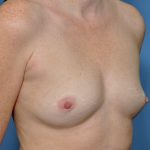Plastic surgery, like every other surgical specialty, relies on medical devices to create their desired results. In many ways, plastic surgery is a device-driven specialty as instruments and implants make possible many of its most well-known operations. One could argue that the hands of the plastic surgeon and their skill and experience who uses these pieces of medical equipment plays the most important role in what happens after surgery. But devices may also create undesireable outcomes that can happen regardless of how well the plastic surgeon performs the technical steps of the procedure.


While the differences between these two types of plastic surgery operations may seem subtle, there is one significant aspect in which they are quite divergent. And this difference is really important for patients to understand and appreciate. The complication rates and the risk of the need for revisional surgery is dramatically disparate between these two types of device-driven operations. There are substantially higher rates of revisional surgery for implanted devices than that in which the device merely helps do the operation.
The reason for these complication rate differences is that device-assisted operations rely on natural tissues for the final result while device-based operation outcomes are based on how one’s body responds to the implanted device. This would explain the revisional surgery rate differences, for example, between a facelift and a breast augmentation. Facelifts, no matter how they are performed, have a small incidence of the need for revisional surgery probably in the range of less than 5% in the first six months after surgery. Breast augmentation has documented revision rates of around 30% in the first three years after surgery. Many different reactions can occur to an implanted medical device. Only a few limited ones can occur from your own natural tissues.
Implanted medical devices have made numerous plastic surgery operations and great face and body contouring results possible. But they come at the risk of higher complication rates and the potential need for revisional surgery. The risk for problems and revisional surgery is also lifelong or as long as the implant is retained in the body. Thus lies the difference between device-assisted and device-based plastic surgery.
Dr. Barry Eppley
Indianapolis, Indiana




